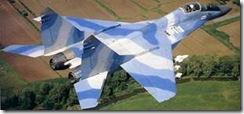War and Peace: Russian Military Memorabilia
Written by Vadim on February 17, 2009 – 12:00 am -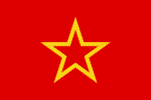 Why do military toys have such a prominent position in every Russian memorabilia collection? Simply, it is because the military was a huge part of Russian life during the twentieth century. The Soviet military was not just a defense department, but a symbol of the strength and power of communism. Military strength was held up as a communist ideal, which can be seen in the government’s names for the military: “The Red Army” and “Army of Workers and Peasants.” Red was a popular color throughout the Communist regime because it symbolized the blood that was shed in the struggle against capitalism.
Why do military toys have such a prominent position in every Russian memorabilia collection? Simply, it is because the military was a huge part of Russian life during the twentieth century. The Soviet military was not just a defense department, but a symbol of the strength and power of communism. Military strength was held up as a communist ideal, which can be seen in the government’s names for the military: “The Red Army” and “Army of Workers and Peasants.” Red was a popular color throughout the Communist regime because it symbolized the blood that was shed in the struggle against capitalism.
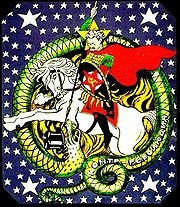 The Soviet military became a force outside its own borders when it captured Berlin in World War II, delivering a death blow to the Nazis. Suddenly, the symbols and weapons unique to the Soviet defense became objects of fascination throughout the rest of the world. Almost overnight, the Soviet Union emerged as a formidable and even frightening world power.
The Soviet military became a force outside its own borders when it captured Berlin in World War II, delivering a death blow to the Nazis. Suddenly, the symbols and weapons unique to the Soviet defense became objects of fascination throughout the rest of the world. Almost overnight, the Soviet Union emerged as a formidable and even frightening world power.
From the 1940’s through its collapse, the Soviet military was the largest in the world. By the 1970’s, it was the only country that boasted military strength rivaling that of the United States. This supremacy was due to two key factors: the Soviet Red Army soldiers and the superior weapons and military technology made available by the Soviet war machine.
The Soviet Army was able to maintain its size due to conscription. For many decades, every young man and many young women in the Soviet Union served at least two to three years in the military. In an empire so far-reaching, this was an impressive force. The soldiers were trained in military maneuvers and strategies as well as Soviet political philosophy.
The other strength of the Soviet military came from their weapons and military equipment. While many Americans are most familiar with the Soviet nuclear program, advances were made in almost every class of weapons. This came at a cost. During the 1980’s, 70% of the Soviet Union’s annual budget and 14% of the gross domestic product was spent on the military. However, this investment yielded some of the most impressive weapons in world history, including:
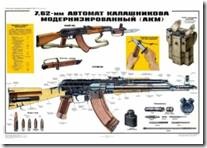 The AK-47/Kalashnikov rifle. Weapons experts estimate that more AK-47 rifles have been produced since its introduction in the late forties than all other assault rifles combined. This is a true assault weapon, with no use except taking human life. Durable, cheap, and easy to use, the AK-47 is all muscle and no mercy.
The AK-47/Kalashnikov rifle. Weapons experts estimate that more AK-47 rifles have been produced since its introduction in the late forties than all other assault rifles combined. This is a true assault weapon, with no use except taking human life. Durable, cheap, and easy to use, the AK-47 is all muscle and no mercy.
The MiG Fighter Jet. This is the best known of a huge collection of Soviet jets. Perhaps best known for its role in the American movie Top Gun, the MiG-29 is considered on par with top of the line American fighter jets such as the F-16.
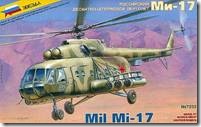 Soviet Military Helicopters. Although the Soviet military had a late start in helicopter manufacturing, they quickly became second only to the United States in helicopter technology. Russians currently design and supply military and civilian helicopters to nations around the globe.
Soviet Military Helicopters. Although the Soviet military had a late start in helicopter manufacturing, they quickly became second only to the United States in helicopter technology. Russians currently design and supply military and civilian helicopters to nations around the globe.
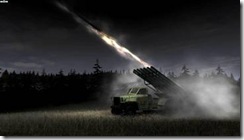 Soviet Missiles. Unlike the United States military, the Soviet Union maintained a branch of the military devoted entirely to missiles and rocketry, the Strategic Rocket Forces. This has yielded some of the most advanced rockets in the world, including the famous Katyusha Rocket of WWII and the SS-9 “Satan” that gained infamy during the Cold War for its potential as a weapon of first strike.
Soviet Missiles. Unlike the United States military, the Soviet Union maintained a branch of the military devoted entirely to missiles and rocketry, the Strategic Rocket Forces. This has yielded some of the most advanced rockets in the world, including the famous Katyusha Rocket of WWII and the SS-9 “Satan” that gained infamy during the Cold War for its potential as a weapon of first strike.
The fame and high quality of Soviet weapons, as well as their notable roles in battles that changed the course of world history, have made the Russian models and toys that resemble them a valued collector’s item for vintage toy collectors, war memorabilia collectors, and lovers of Russian culture. Unfortunately, the demand for these pieces of history is far greater than the supply of authentic Russian military toys.
References:
http://en.wikipedia.org/wiki/Soviet_Armed_Forces
http://en.wikipedia.org/wiki/Red_army
http://www.britannica.com/EBchecked/topic/494046/Red-Army
http://en.wikipedia.org/wiki/AK-47
http://en.wikipedia.org/wiki/MiG
http://www.centennialofflight.gov/essay/Rotary/Soviet/HE19.htm
http://en.wikipedia.org/wiki/Katyusha
Tags: MiG, military toys, missile, rocket, tanks, toys
Posted in General | No Comments »
The Soviet Space Programme: Sputnik to Mir – A Century of Russian Pride
Written by Vadim on February 10, 2009 – 3:25 pm -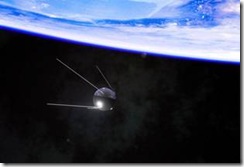 Some of the most popular Russian toys from the second half of the twentieth century were toys related to the Soviet space program. It’s no wonder that this unlikely topic captured the imagination of several generations of Russian tots. From the launch of Sputnik I in 1957, the space program was a proud symbol of the skill and supremacy of the Soviet Union.
Some of the most popular Russian toys from the second half of the twentieth century were toys related to the Soviet space program. It’s no wonder that this unlikely topic captured the imagination of several generations of Russian tots. From the launch of Sputnik I in 1957, the space program was a proud symbol of the skill and supremacy of the Soviet Union.
Sputnik opened not just an interest in space and astronomy, but a love of education and the sciences. Although the Soviet Union began as a movement of the working class, it found its renaissance in technology. The passion ignited by Sputnik was strong enough to sustain the country over a decades-long arms race. This enthusiasm was fed by the Cold War against the United States of America, which was romanticized as a competition between the opposing ideologies of communism and capitalism.
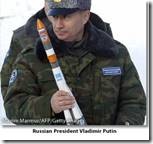 For a while, it appeared that communism was winning the battle of the brains. The Soviet Union was not just the first nation to launch a satellite into space, but the first nation to put a man, then a woman, into space through the groundbreaking Vostok program.
For a while, it appeared that communism was winning the battle of the brains. The Soviet Union was not just the first nation to launch a satellite into space, but the first nation to put a man, then a woman, into space through the groundbreaking Vostok program.
Among the most popular Soviet space toys were toy rockets, made to resemble famous Soviet rockets such as the highly successful Proton rockets, which have been in continual use for several decades, and the R-7 rockets.
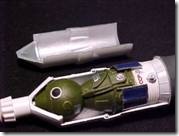 Another giant leap for mankind made by the Soviet Union was the Soyuz program, a manned space program which has put more humans into space than any other in history. In a nation fraught with economic and political troubles, these triumphs caught the imagination and spirit of millions of Russians. A generation of children grew up playing with scale Soyuz space capsules and envisioning themselves as the next pioneer to see the Earth from the outside in.
Another giant leap for mankind made by the Soviet Union was the Soyuz program, a manned space program which has put more humans into space than any other in history. In a nation fraught with economic and political troubles, these triumphs caught the imagination and spirit of millions of Russians. A generation of children grew up playing with scale Soyuz space capsules and envisioning themselves as the next pioneer to see the Earth from the outside in.
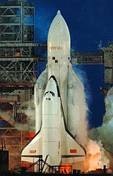 Like the American space shuttle it imitates, the Soviet Buran space shuttle was a recognizable symbol of the country’s advances into the unknown frontier of space. As the Cold War came to a close and Soviet-American relationships thawed, the space program continued to raise national pride and stimulate interest in the sciences.
Like the American space shuttle it imitates, the Soviet Buran space shuttle was a recognizable symbol of the country’s advances into the unknown frontier of space. As the Cold War came to a close and Soviet-American relationships thawed, the space program continued to raise national pride and stimulate interest in the sciences.
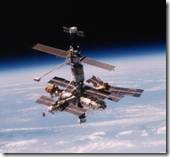 The third generation of Soviet space craft culminated in the space station Mir, which was visited by astronauts from many different nations. Mir stayed in orbit for just days short of a decade, and outlasted the transition from a Soviet space program to a purely Russian one.
The third generation of Soviet space craft culminated in the space station Mir, which was visited by astronauts from many different nations. Mir stayed in orbit for just days short of a decade, and outlasted the transition from a Soviet space program to a purely Russian one.
 The Soviet space program has been an enduring point of Russian pride, and nowhere is this as evident as in Russian toys from this era. Models can be found of almost every declassified Soviet spacecraft. The toys range from the fanciful to perfectly scaled replicas. Although the Russian space program continues, it will never have the place in society it held during the Cold War. For just a few decades in time, travel in space was a symbol of hope and triumph in a nation that yearned for both. The era may be past, but its spirit lives on in the many toys and models that enthralled millions of Russian children.
The Soviet space program has been an enduring point of Russian pride, and nowhere is this as evident as in Russian toys from this era. Models can be found of almost every declassified Soviet spacecraft. The toys range from the fanciful to perfectly scaled replicas. Although the Russian space program continues, it will never have the place in society it held during the Cold War. For just a few decades in time, travel in space was a symbol of hope and triumph in a nation that yearned for both. The era may be past, but its spirit lives on in the many toys and models that enthralled millions of Russian children.
References:
http://en.wikipedia.org/wiki/Soviet_space_program
http://en.wikipedia.org/wiki/Sputnik
http://en.wikipedia.org/wiki/Vostok
http://en.wikipedia.org/wiki/Proton_(rocket)
http://en.wikipedia.org/wiki/Soyuz_spacecraft
http://en.wikipedia.org/wiki/Buran_(spacecraft)
http://en.wikipedia.org/wiki/Mir
Tags: rocket, soyuz, space capsule, space toys, sputnik
Posted in General | No Comments »
